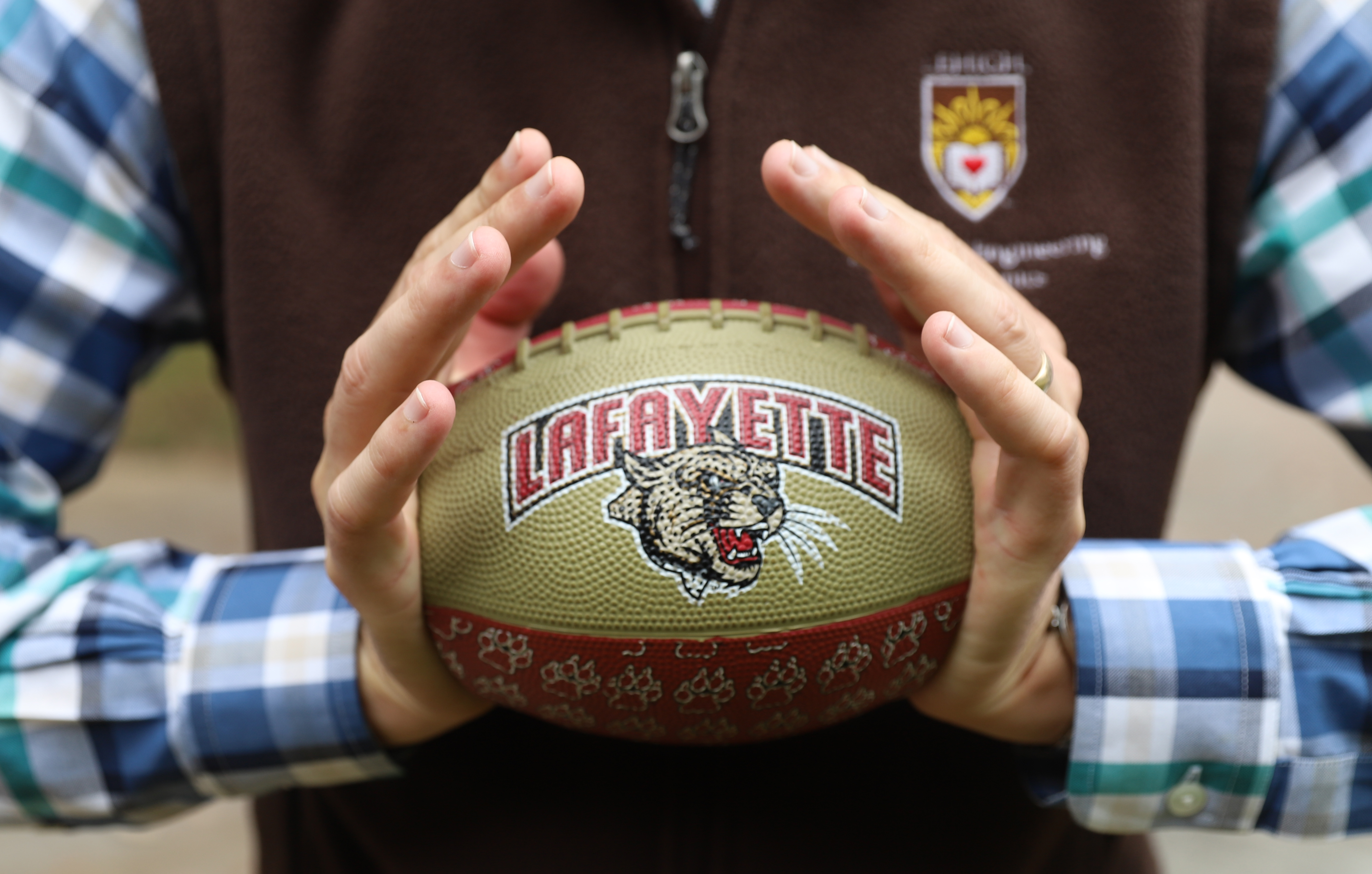J.T. Realmuto. Kyle Schwarber. Bryce Harper.
Both World Series newbies and diehard Phillies fans know these names as the group of sluggers who have hit dingers when the team donned its rally caps.
But talk to an aeronautical engineer, and ehhh, no big deal.
Hitting a home run is easier with a sphere. They credit the Magnus effect where a backspin on an object moving through air gains lift.
Turn that sphere into a prolate spheroid — now that might impress.
Prolate what?
Just picture a pointy sphere, like a football.
Such an object is much harder to hurtle through space.
Understanding how it works just might provide the brown and white the scientific edge needed to crush their competition during Rivalry Week.
Let’s start with a lesson in aerodynamics — the way objects move through air. There are four forces that impact flight: weight, lift, drag, and side force. To make things even more complicated, an object can also be twisted in three different ways. Think of an airplane that can move in three directions — up/down, left/right, front/back — but it also experiences three rotations — pitch, roll, and yaw. This is what engineers refer to as the six degrees of freedom.
Translating the forces into football, the weight of the average pigskin is 16 ounces (deflategate aside). Next comes the quarterback and how he throws the ball — lift keeps the ball up, and drag slows it down. Side forces move the ball laterally left or right.

Some aspects of an object’s design can help those factors. Think of the dimples and dimple pattern on a golf ball which improves performance by increasing loft and decreasing drag.
For a football, the texture of the leather panels, the seams, the valve, and the cross stitches all aid a football. They help create an energized boundary layer — the airflow closest to and in contact with the surface.
Here’s where it’s time to call an audible and bring in an expert, Justin Jaworski.
Don’t let the name fool you. He makes clear that his branch is regrettably far removed on the family tree from celebrated quarterback Ron Jaworski.
The associate professor of mechanical engineering specializes in aeroelasticity or, as he calls it, “the coupling of aerodynamic loads with the motion of deformable structures.”
Football is not his sport of choice. He grew up in Tampa when the Buccaneers held the league’s worst record for well over a decade. Nor is the football an object to which he typically applies his scientific knowledge. Still, he understands aerodynamics and aeroacoustics (his side hustle is the silent flight of owls) and how their basic principles can be applied to help the Mountain Hawks.
“A quarterback will want to modify the flow around the ball to their advantage,” he says. “Unlike for spheres, the Magnus force has a minor effect on a football, which behaves more like a ballistic projectile. Its lateral movement is mostly due to the combination of its spiraling motion and the aerodynamic loads it experiences during a pass.”
“While sports science experts can talk about grip strength, hand placement, stance, arm motion, release pattern, and rotational spin, managing flow separation is an important underlying consideration for football design and performance.”
Flow separation happens when the airflow no longer follows the surface of the football. Think of a pass that wobbles like a lame duck. That’s the bad kind — turbulent flow separation.
“The throw and ball design should create a turbulent flow to move the point of flow separation to the rear of the football, which is best for drag reduction and flight stability,” he says.
Getting it right can be hard, for all of you Monday Morning Quarterbacks out there.
There are too many variables — time to throw as the pocket collapses, weather conditions and temperatures, the distance the ball is traveling, time left on the clock, desperation, and human conditioning.
All the stuff that makes the science of sport balanced against its improvisational art.